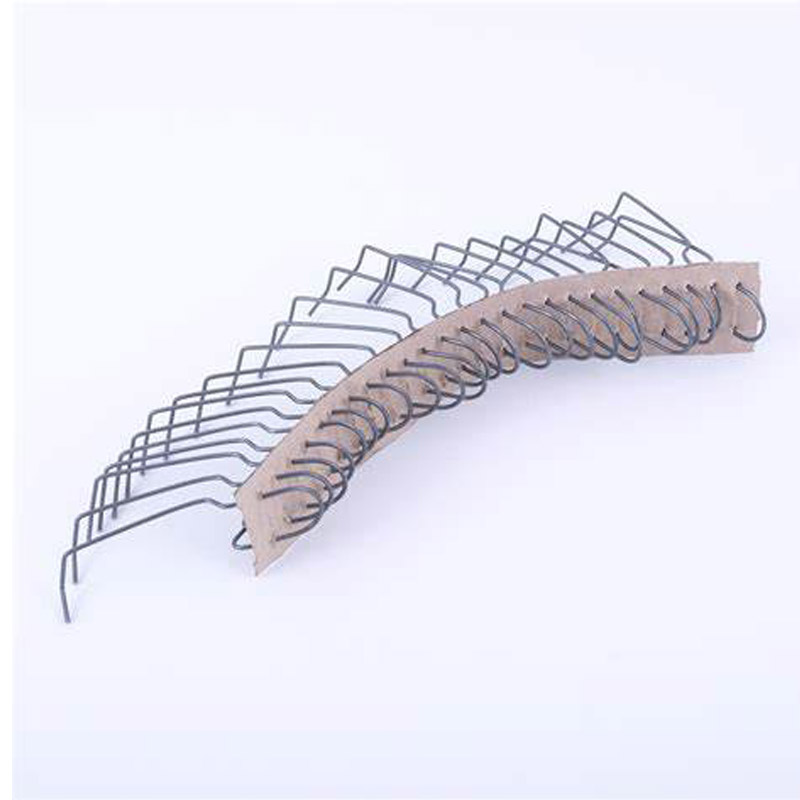
- Mobile Phone
- +8613931874955
- sales@cntcmetal.com
stainless steel structural bed joint reinforcement
Stainless Steel Structural Bed Joint Reinforcement
In the field of construction and architecture, the integrity and strength of structural elements play a pivotal role in ensuring the longevity and safety of any building. One crucial aspect that contributes significantly to this integrity is the reinforcement of bed joints, particularly when using stainless steel. This article delves into the significance of stainless steel structural bed joint reinforcement, examining its advantages, applications, and installation methods.
Understanding Bed Joints in Construction
Bed joints are horizontal joints found in masonry structures, where bricks or blocks are laid one on top of another. These joints must be strong enough to withstand various stresses, including those from weight, environmental changes, and forces generated by natural events like earthquakes or high winds. Reinforcement of these joints typically involves the integration of materials that enhance their strength and ductility. Stainless steel, known for its high resistance to corrosion and substantial mechanical properties, has emerged as an excellent choice for this task.
Advantages of Stainless Steel Reinforcement
1. Corrosion Resistance One of the most significant benefits of stainless steel is its resistance to rust and corrosion. This makes it ideal for use in environments where moisture is prevalent or where the materials may be exposed to other corrosive substances. Reinforcing bed joints with stainless steel ensures the longevity of the structure, reducing maintenance costs and extending the lifespan of the building.
2. High Strength-to-Weight Ratio Stainless steel boasts a remarkable strength-to-weight ratio, allowing for robust reinforcement without adding excessive weight to the structure. This quality is particularly advantageous in seismic zones or areas subject to high wind loads, where reducing the overall mass of the building while maintaining strength is critical.
3. Aesthetic Appeal Beyond its mechanical advantages, stainless steel also provides aesthetic benefits. Its sleek and modern look can be integrated into the overall design of a building, allowing architects to create visually appealing structures while also capitalizing on the material's functional benefits.
4. Ease of Installation Working with stainless steel can simplify the installation process. It can be fabricated into various shapes and sizes, making it adaptable to different project requirements. Furthermore, the material can be easily welded and joined, facilitating efficient construction processes.
stainless steel structural bed joint reinforcement

Applications of Stainless Steel Bed Joint Reinforcement
Stainless steel structural bed joint reinforcement is utilized in various applications, from residential buildings to commercial skyscrapers. In high-rise construction, where the stability of the structure is a paramount concern, incorporating stainless steel reinforcement into bed joints can enhance the overall resilience of the building.
In addition, public infrastructure projects like bridges and tunnels benefit from stainless steel reinforcement. These structures are often subject to extreme conditions, including exposure to de-icing salts and varying temperatures. Using stainless steel helps mitigate potential issues related to corrosion, ensuring these essential structures remain safe and serviceable for years to come.
Installation Methods
The installation of stainless steel bed joint reinforcement involves several steps. First, the appropriate sizes and shapes of stainless steel bars or mesh must be selected based on the specific requirements of the project. During the masonry construction process, these reinforcements are placed within the bed joints, ensuring that they are adequately positioned to offer maximum strength.
Once the stainless steel is in place, the joints are filled with mortar, encapsulating the reinforcement and binding it to the masonry units. This combination of materials provides a composite action that significantly enhances the load-carrying capacity and ductility of the masonry walls.
Conclusion
Incorporating stainless steel structural bed joint reinforcement into construction projects is a forward-thinking choice that combines strength, durability, and aesthetic appeal. As the construction industry continues to evolve, the importance of using advanced materials like stainless steel in reinforcement applications will only grow, helping to build safer, longer-lasting structures for future generations.
share:
-
Yard Sign Stakes: Reliable Guardians of Outdoor SignsNewsAug.04,2025
-
Wall Ties: Invisible Guardians of Building StabilityNewsAug.04,2025
-
Resilient Web: The Super Guardian Power of Concrete MeshNewsAug.04,2025
-
Masonry Accessories: A versatile assistant on building foundationsNewsAug.04,2025
-
Iron Binding Wire: the 'invisible reinforcement specialist' in the fields of architecture and industryNewsAug.04,2025
-
Dynamic Spring: The diverse functions and excellent performance of Wire Tension SpringNewsAug.04,2025
-
Your Source for Concrete Wall Ties and Masonry AccessoriesNewsJul.10,2025



















